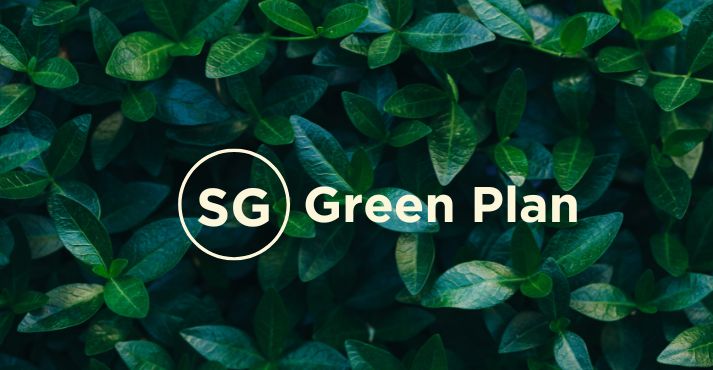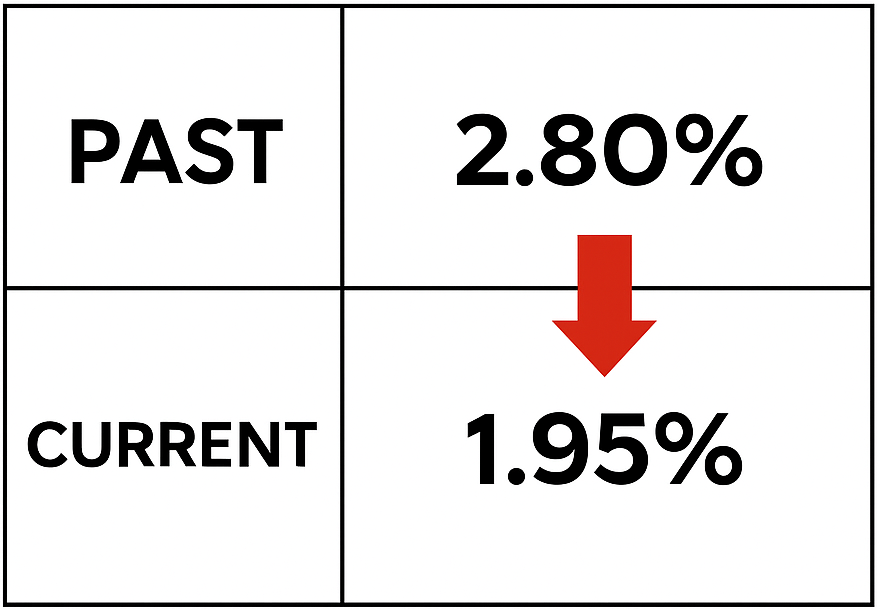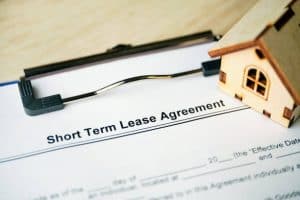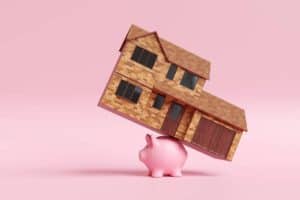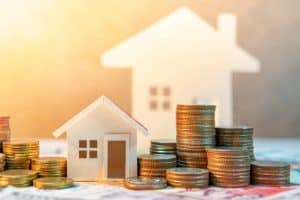Singapore’s going green — and it’s not just about planting more trees.
The Green Plan 2030 is a big-picture roadmap to make the country more sustainable, liveable, and future-ready. Think: more parks, cleaner energy, better public transport, and smarter homes. Whether you’re a homeowner, investor, or just curious about what’s coming, this plan will touch your life in one way or another.
Quick tip: Homes near new MRT lines or green corridors? They’re likely to see stronger demand and better resale value down the road.
If you’re planning to buy or refinance, now’s a good time to check your numbers with this mortgage loan repayment calculator. The market’s shifting — and it’s all tied to how green Singapore gets.
Let’s dive into what the Green Plan 2030 actually covers — and why it’s more than just a buzzword.
What Is the Singapore Green Plan 2030?
The Green Plan is Singapore’s big push to go low-carbon by 2030. It’s more than just planting trees — it’s about how we live, move, build, and even borrow. From energy use to property planning, it’s set to shape everyday life in a real way. If you’re planning to buy a home or refinance in the next few years, this plan is something to watch.
What are the goals of the Singapore Green Plan 2030?
At its core, the Green Plan 2030 is Singapore’s roadmap to tackle climate change. It focuses on cutting carbon emissions, building greener towns, and shifting toward a low-carbon lifestyle — all within the next decade.
Some key targets include peaking emissions by 2030, achieving net zero by 2050, and transforming how we use energy, move around, and build homes. For homebuyers, these goals will influence everything from building design to loan policies, especially in eco-districts tied to HDB or private property loans.
Honestly, what’s impressive is how the plan links everything — not just the environment, but housing, transport, and finance too. It’s a whole-system shift.
What are the five pillars driving the plan?
The Green Plan revolves around five key areas that shape both policy and daily life:
5 Key Pillars of Singapore Green Plan 2030 and What They Cover
| Pillar | What It Focuses On |
|---|---|
| City in Nature | More parks, trees, biodiversity, and liveable spaces |
| Sustainable Living | Daily habits, waste reduction, and greener transport |
| Energy Reset | Solar power, electric vehicles, clean energy imports |
| Green Economy | Green finance, eco jobs, innovation |
| Resilient Future | Flood protection, climate risks, long-term planning |
As these pillars shape new developments, they’ll also influence financing needs. If you’re planning a green home purchase, tools like a mortgage repayment calculator can help you plan ahead more accurately.
What agencies and ministries are behind this initiative?
The plan is a joint effort across multiple ministries — not just environmental ones. It’s led by:
- Ministry of Sustainability and the Environment (MSE)
- Ministry of National Development (MND)
- Ministry of Education (MOE)
- Ministry of Transport (MOT)
- Ministry of Trade and Industry (MTI)
Together, they shape policies across housing, transport, schools, and business — and by extension, impact how we plan home financing in Singapore for the years ahead.
Energy Reset — Powering the Transition to Low-Carbon Energy
Singapore’s push for cleaner energy is picking up speed — and the Green Plan is right at the heart of it. From solar panels to electric vehicles (EVs), the way we power our homes and move around is set to change fast. This shift also brings new considerations for homebuyers and investors, especially when evaluating long-term property value and cost of living.
What renewable energy goals has Singapore set for 2030?
One of the biggest goals is to ramp up solar power — by 2030, Singapore aims to quadruple its solar capacity to at least 2 gigawatt-peak (GWp). That’s enough to power around 350,000 households a year.
In addition, the government plans to import up to 4 GW of low-carbon electricity, making up 30% of our supply by 2035. These steps reduce reliance on natural gas and support a more diverse energy mix.
Expert tip: If you’re buying in upcoming towns with solar-ready roofs or energy-efficient builds, you’re likely to benefit from lower long-term utility costs — a plus for both homeowners and landlords.
What are the targets and incentives for electric vehicle adoption?
The Green Plan sets an ambitious target: all new car registrations to be cleaner-energy models by 2030.
To support this:
- The government will roll out 60,000 EV charging points islandwide
- EV buyers enjoy rebates under the EV Early Adoption Incentive (EEAI)
- Towns are being redesigned with EV-ready lots and charging hubs
If you’re looking to buy a home in the next few years, properties near high EV infrastructure may see better rental demand. Condo buyers should also check if developments are future-proofed — something we explore more in this condo loan guide.
What new technologies are being explored for clean energy?
Beyond solar and EVs, Singapore is investing in:
- Hydrogen energy as a long-term clean fuel
- Carbon capture and storage (CCS) technology
- Smart grid systems for real-time energy monitoring
These may still be in early stages, but they’re shaping how energy is generated and distributed in future estates.
My opinion is that hydrogen tech feels far-off for homes, but solar panels and EVs are already becoming the new normal — especially in Tengah and upcoming smart towns.
Sustainable Living — How Singapore Is Shaping Greener Lifestyles
Sustainability isn’t just about policies — it starts with how we live every day. The Green Plan 2030 wants to make greener lifestyles the norm, not the exception. From habits at home to national recycling goals, there’s a clear push to reduce waste, cut emissions, and make eco-living second nature.
What everyday habits support sustainable living?
Simple choices can go a long way. Under the Green Plan, Singapore encourages:
- Using energy-efficient appliances
- Reducing food waste
- Choosing reusable over disposable
- Taking public transport or cycling when possible
As more homes are designed to support low-waste living — like composting points or centralised recycling chutes — it’s worth considering how these features affect your daily costs and future resale value.
Tip: Future BTOs and condos may even come with green certifications. If you’re buying into these, check how it affects your home loan eligibility with this guide on refinancing options.
How is the government promoting recycling and waste reduction?
Singapore aims to reduce waste sent to landfill by 30% by 2030. Key efforts include:
- The Zero Waste Masterplan, which promotes a circular economy
- Mandatory packaging reporting for large producers
- Recycling targets for both households and commercial properties
There’s also more investment in infrastructure — like the new Tuas Nexus, which combines waste treatment with energy recovery.
If you’re living in an older flat and considering upgrading, these green upgrades could be a factor when weighing options under the HDB vs private property loan frameworks.
What programmes are in place to engage communities and schools?
It’s not just top-down. The Green Plan includes efforts to educate and engage residents, including:
- The Eco Stewardship Programme in schools
- Green commmunity groups that lead clean-up and food waste projects
- Support for town council initiatives in recycling and composting
Personal view: It’s encouraging to see more kids learning about sustainability early on. The ripple effect — influencing families at home — might be one of the plan’s smartest moves. For a deeper look at how your town’s green design affects long-term value, check out our article on eco-town planning and BTO resale trends(link to internal blog article here once it’s available).
City in Nature — Expanding Green Spaces Across Singapore
Singapore isn’t just going green — it’s going lush. Under the Green Plan 2030, the goal is to bring nature even closer to where we live, work, and study. That means more trees, more parks, and more green roofs — not just for show, but to cool the city, support biodiversity, and improve quality of life.
What are the tree planting and park expansion targets?
The numbers are ambitious. By 2030, Singapore plans to:
- Plant 1 million more trees
- Set aside 200 hectares of new parks
- Ensure every household is within a 10-minute walk to a green space
Here’s a quick summary:
Singapore Green Plan 2030: Tree Planting and Park Expansion Targets
| Target | Goal by 2030 |
|---|---|
| Trees Planted | 1 million |
| New Park Land | 200 hectares |
| Access to Green Spaces | Within 10 minutes for all |
Tip: If you’re planning to buy near upcoming parks or nature corridors, keep an eye on ballot demand. These stacks tend to go fast — and often fetch higher resale prices after MOP.
How is Singapore integrating greenery into urban areas?
It’s not just about planting more — it’s about weaving nature into our built-up landscape.
Some key moves include:
- Green roofs and vertical gardens through the Skyrise Greenery Incentive Scheme
- Park connectors that link neighbourhoods across the island
- Nature ways along roads with biodiversity-friendly planting
- Green buildings that blend architecture with plant life
These features are becoming part of new BTOs and private condos — especially in places like Tengah, Punggol, and Queenstown.
If you’re exploring options, it’s worth comparing your financing using a refinancing guide for HDBs if you already own, or looking at condo loan options for upcoming eco-launches.
How does greenery impact property value and lifestyle?
It’s simple: homes near greenery tend to be more attractive. Why?
- Better air quality
- Lower ambient temperature
- Higher walkability
- More scenic views
- Health and wellness benefits
This can translate to:
- Stronger rental demand for units facing green views
- Higher resale value near parks or green connectors
- Increased lifestyle satisfaction, especially for families and retirees
Personal take: In the last few years, we’ve seen resale flats near green belts (like Bukit Panjang’s Rail Corridor) outperform neighbouring blocks — even with similar age and layout.
Green Economy — Supporting Businesses and Innovation
The Green Plan isn’t just about homes and parks — it’s about business too. As sustainability becomes the norm, Singapore is growing a green economy that’s future-ready, globally competitive, and packed with new career opportunities. If you’re an investor or entrepreneur, this is a space to watch.
What is Singapore doing to promote green finance?
Green finance is now a national priority. The Monetary Authority of Singapore (MAS) is rolling out initiatives to make Singapore a regional green finance hub.
Here’s what’s already in motion:
- Green and sustainability-linked bonds issued by government agencies and private firms
- The Green Finance Action Plan, which promotes responsible investing
- Development of a green taxonomy to guide eco-friendly investments
- Support for banks offering green loans, especially for energy-efficient upgrades
These trends could eventually shape home loan structures, especially if green homes are favoured with better rates — something to keep in mind when comparing options through a mortgage broker.
How are businesses being supported in going green?
From SMEs to MNCs, the government is helping companies reduce their carbon footprint through:
- Grants and incentives under Enterprise Singapore’s Enterprise Sustainability Programme
- Carbon accounting tools to track emissions
- Support for energy audits and retrofitting
- Co-funding for green certifications and R&D
Tip: Businesses housed in green-certified buildings may attract more talent and clients — and in the long run, lower operational costs too.
If you’re looking to invest in commercial units, it’s worth checking how green certifications may affect both operating costs and loan terms. Start with this overview of commercial property loan options to get a sense of your financing flexibility.
What skills and jobs are needed in the future green economy?
The move toward sustainability is also creating demand for new types of roles, especially in:
- Sustainable building design and construction
- Environmental engineering and waste management
- Carbon management and climate risk analysis
- Green finance and ESG reporting
Urban farming and food sustainability
Green Economy Careers: High-Demand Sustainability Jobs in Singapore
| Green Sector | In-Demand Roles |
|---|---|
| Built Environment | Green architects, energy modellers |
| Finance & Consulting | ESG analysts, sustainability consultants |
| Tech & Engineering | Solar engineers, carbon systems analysts |
If you’re in a career pivot or planning ahead for your kids, this shift is real. It’s not just a trend — it’s a full industry wave.
Resilient Future — Building Climate Resilience for Generations Ahead
With hotter days and rising sea levels becoming the norm, resilience is no longer optional — it’s urgent. The Green Plan’s final pillar focuses on protecting Singapore’s people, infrastructure, and homes against long-term climate threats.
What is Singapore doing to prepare for rising sea levels?
Singapore is low-lying — about one-third of the island is just under 5 metres above sea level. To defend against coastal flooding, the government is investing heavily in:
- Coastal protection infrastructure, starting with East Coast and Jurong
- Integrated drainage systems to handle heavier rainfall
- The new Coastal-Inland Flood Model for smarter planning
Long-term projects could take decades — and billions — to complete. But the groundwork is already in place.
Expert tip: If you’re buying near coastlines or reclaimed land, check URA’s development guide plans carefully. Long-term flood resilience may affect property value more than you think.
How are buildings and infrastructure being climate-proofed?
New buildings and towns are being designed to withstand climate shifts.
Here’s what’s happening:
- Mandatory higher green building standards (Green Mark 2021)
- Use of cool materials to reduce urban heat
- Flood-proofing for ground-level units and carparks
- Expansion of district cooling systems in high-density areas
Homeowners upgrading older flats or condos may want to look into refinancing options to finance green retrofits — these can add long-term value and possibly reduce your utility costs.
What are the targets for carbon neutrality and long-term sustainability?
Singapore’s long-term climate target is clear:
→ Net zero emissions by 2050, and ideally sooner.
To support this:
- All sectors — including transport, buildings, and waste — are aligning toward low-carbon pathways
- New developments are being assessed not just for location, but for lifecycle emissions
- Financial tools, including green loans and carbon credits, are gaining traction
If you’re making long-term property decisions, aligning with these sustainability trends could be a strategic advantage. Whether you’re planning for a new purchase or considering a UOB green home loan, it’s worth asking: Is my next home future-proof?
How the Green Plan Affects Housing and Real Estate
The Green Plan isn’t just about saving the planet — it’s reshaping the property market too. From new MRT lines to lush green corridors, these changes are already affecting where people want to live — and what they’re willing to pay for it.
How will green spaces and MRT lines affect HDB pricing?
HDB flats near upcoming parks and MRT stations often see stronger demand — and this trend is likely to continue.
Why? Because the Green Plan brings:
- Improved walkability (think: car-lite towns like Tengah)
- Nature integration (park connectors, rooftop gardens)
- Better accessibility (new MRT lines under the LTA master plan)
All of this can raise the appeal of certain stacks or blocks, especially in BTO towns with strong sustainability features. If you’re planning to buy in one of these locations, consider using a HDB loan calculator to budget for potential price differences.
Tip: Don’t just look at current prices — check URA maps to see what’s being built nearby. Future MRTs or green links can quietly boost future resale value.
What do green features mean for resale and rental value?
Buyers and tenants alike are becoming more eco-aware. That means properties with energy-saving features or near green infrastructure often command better value.
Green home perks:
- Lower utility bills from better insulation and smart cooling
- Stronger rental appeal, especially among younger tenants
- Competitive edge in resale due to future sustainability standards
In some condos, we’re already seeing buyers asking about EV charging stations and solar panels — features that used to be “nice-to-have” but are now becoming expected. To compare loan options for these properties, check out this OCBC home loan guide with flexible packages for eco-conscious buyers.
How can buyers and investors benefit from Green Plan alignment?
If you’re strategic, the Green Plan can work in your favour.
Here’s how:
- Buy near future MRT or park zones — early buyers usually gain the most
- Choose units in eco-focused projects — likely to see stronger long-term demand
Refinance smartly — green upgrades may make your home more valuable, giving you better terms when you refinance your loan
Best Property Strategies to Maximise Gains from the Green Plan 2030
| Strategy | Why It Works |
|---|---|
| Buy near green infrastructure | Long-term capital growth, better lifestyle appeal |
| Opt for sustainable units | Lower costs + stronger rental potential |
| Stay informed on policy shifts | Helps with timing purchases and refinancing |
Personal take: Buyers who align with Green Plan zones now — even if it’s just a slightly less central location — may enjoy outsized returns later. It’s not just about value, it’s about resilience.
Final Thoughts — Is the Green Plan Shaping Your Property Strategy?
The Singapore Green Plan 2030 isn’t just a government initiative — it’s a real-time shift in how our homes, towns, and investments are evolving. Whether it’s a BTO near a new park, a condo with EV charging, or a commercial space in a green-certified building, sustainable features are already driving value.
Smart buyers and investors aren’t just asking “Where’s the MRT?” — they’re also asking “Where’s the greenery?”
If you’re planning your next move, aligning with these trends can give you a real edge. Need help figuring out the best way to finance that future-proof home? Speak with a trusted Singapore mortgage broker to map out your options.
For more on how sustainability is shaping HDB towns and property outlooks, check out our guide on URA Master Plan insights and how they tie into long-term planning.
And if you’d like to go deeper into upcoming green zones, here are a few useful resources:
- URA’s Master Plan 2019 — Green Infrastructure
- Ministry of Sustainability — Green Plan 2030 Overview
The future is green — and if you play it smart, it can be profitable too.

